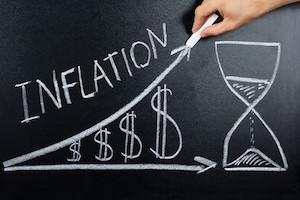 While the long-term economic impact of the pandemic remains unclear, one thing that is clear is the highest inflation in decades has forced many Americans to reevaluate their retirement saving habits.
While the long-term economic impact of the pandemic remains unclear, one thing that is clear is the highest inflation in decades has forced many Americans to reevaluate their retirement saving habits.
This is according to a new survey from U.S. News & World Report’s 360 Reviews revealing that half of U.S. adults saving for retirement paused doing so at some point in 2022 — specifically due to skyrocketing inflation.
What’s more, nearly a third (32%) of respondents withdrew some of their retirement savings in 2022 to keep up with the rising costs of living, while 41% indicated that they have stopped contributing to retirement funds, such as a 401(k) or IRA.
U.S. News surveyed 2,000 U.S. adults who have saved for retirement for more than five years and who were not yet retired regarding the ways their retirement savings habits have changed due to inflation and cost-of-living hikes in 2022, as well as inquiring about their retirement savings stressors.
The survey found that nearly three-quarters (72%) of respondents have reevaluated their retirement plans due to COVID-19 and its economic effects, with slightly more than a quarter (27%) saying they have greatly reevaluated their plans.
“The survey data shows a clear correlation between the rise of inflation and Americans’ delayed or altered retirement plans. Americans continue to worry about the future repercussions of the COVID-19 pandemic,” observes Scott Nyerges, senior insurance editor at 360 Reviews.
Survey participants apparently are divided in their economic outlook for 2023, however. When asked what the state of the economy will be at the end of the year, 57% believe it will be stronger, while 43% believe it will be weaker. Among those who predict growth, only 13% think it will be much stronger.
Yet, despite this division, more than 6 in 10 (61%) participants believe that their retirement plans will improve in 2023, suggesting that “optimism does remain among the public,” says Nyerges.
That said, the perceived outlook for younger generations is more pessimistic, according to those surveyed. In this case, the survey found that roughly 8 in 10 respondents (79%) believe that Millennials (those born between 1981 and 1996) will have to retire after age 65. This percentage increases slightly to 80% when asked about Gen Z (those born between 1997 and 2012). Notably, 88% of respondents say the generation directly after theirs will have a more difficult time retiring than theirs will.
The “Retirement and Inflation Survey” also evaluates participants’ thoughts on the “American Dream.” It found that nearly 6 in 10 respondents (59%) believe the typical dream of owning a home, being debt-free and retiring comfortably is “attainable” for their generation, but less than half (48%) say the dream is attainable for the generation after theirs.
COLA Concerns
Meanwhile, the Social Security cost-of-living adjustment (COLA) may present another worry for working Americans, according to the findings. To account for inflation, the benefits provided by Social Security and Supplemental Security Income will increase 8.7% in 2023.
While this may provide relief to those already retired, it may raise some concern for those still working and saving for retirement, U.S. News notes. The 2022 report from the Social Security Board of Trustees released last June estimated that Social Security retirement funds will be depleted by 2034. Given the possibility of another large COLA increase, however, some fear that additional large adjustments will deplete the reserves more quickly. Although 74% of survey respondents say they are confident in their understanding of how Social Security works, 65% also anticipate having to work post-retirement to supplement their Social Security income, the findings show.
The survey of 2,000 U.S. adults was conducted in November 2022 using third-party survey platform Pollfish. Females comprised 55% of respondents, while males represented the remaining 45%.
- Log in to post comments
